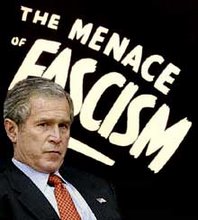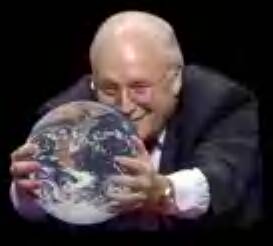Voting machines give Florida a new headache
MIAMI: It used to be that everyone wanted a Florida voting machine.
After the history-making presidential recount of 2000, Palm Beach County sold hundreds of its infamous Votomatic machines to memorabilia seekers, including a group of chiropractors in Arizona, the cable-news host Greta Van Susteren and the hotelier André Balazs. One machine ended up in the Smithsonian Institution. Dozens were transformed into pieces of contemporary art for an exhibition in New York.
But now that Florida is purging its precincts of 25,000 touch-screen voting machines - bought after the recount for up to $5,000 each, hailed as the way of the future but deemed failures after five or six years - no one is biting.
"I think we are going to have them on hand for a while," said Arthur Anderson, the elections supervisor in Palm Beach County, which must jettison 4,900 touch-screen machines for which it paid $14.5 million in 2001 and still owes $4.8 million. "They are probably, for the most part, headed to the scrap pile."
Across the United States, jurisdictions that experimented with touch-screen voting after 2000 are starting to scale back or abandon it based on a growing perception that the machines are unreliable and concern that they do not provide a paper trail in case questions arise. California will sharply scale back touch-screen voting next year after a review by the secretary of state found it was vulnerable to hackers.
Florida is the biggest state to reject touch screens so sweepingly, and its deadline for removing them, July 1, 2008, is the most imminent. For the 15 counties that must dump their expensive systems, buy new optical-scan machines and retrain thousands of poll workers, hurdles abound.
Six counties still owe a combined $33 million on their touch-screen machines, which most bought hurriedly to comply with a new federal law banning punch-card and lever voting systems after the recount. Miami-Dade County alone must cast aside 7,200 touch-screen machines, for which it paid $24.5 million and still owes $15 million.
Secretary of State Kurt Browning is seeking buyers for the touch screens, but he will not even begin to recoup the counties' losses. Inquiries have come from a Veterans Affairs hospital in Miami, which hoped to convert some of the machines into "learning kiosks" for disabled patients, and the Century Village retirement community in Palm Beach County, which wanted them for condo association elections.
Sequoia Voting Systems, which manufactured some of Florida's machines, offered to buy them back for a bleak $1 apiece.
"We're not accepting that offer," said Sterling Ivey, a spokesman for the Florida Division of Elections. "We can get more for our money."
So far, Ivey said, the most likely options are selling the machines to recycling companies that would strip them for parts - from the wheels on the voting booths to the circuit boards - or reselling them to other states or countries through one of the original vendors, Election Systems and Software of Omaha.
"We would expect a number of jurisdictions to be interested in adding to their existing voting terminals as they prepare for the 2008 general election," said Ken Fields, a spokesman for the company.
Most of the money for the touch screens came from the federal government, and so will most for the replacement machines, which cost about $6,000 each. But with Florida county budgets tightening due to a state mandate to cut property taxes, election officials are griping.
"I think it's a real waste of money," said Kay Clem, the elections supervisor in Indian River County. "I don't have my heart in it, because I think we're going 30 years backwards."
Under the state's new election law, disabled voters can keep voting by touch screen - akin to using an A.T.M. - until 2012. But everyone else will use them only twice more, for the presidential primaries on Jan. 29 and municipal elections next spring. With optical scanning, voters use pens to mark paper ballots that are then read by scanning machines, leaving a paper record for recounts.
The only county that has already switched is Sarasota, where voters last year approved a charter amendment requiring a paper-ballot system. More than 18,000 votes cast on touch-screen machines were not recorded in a close Congressional race in the county last year, raising an outcry that hastened the statewide switch to optical scanning.
Sarasota County's touch-screen machines are sequestered under court order while an investigation into last year's election continues. Most of the other counties getting new equipment will ask the state to cart their touch screens away after the presidential primaries.
"I will get them off my hands, one way or the other," Browning said.
Like many other county election officials, he said he still believed in touch-screen voting, calling it "a very accurate, secure, reliable system." He supports the switch to optical scanners, Browning said, only because the public no longer trusts touch screens.
"If you were to do a very thorough study of problems with touch screens," he said, "you would probably find that 99.9 percent of them would be traced back to human error."
Public interest groups almost universally supported the move to optical scanning, which is now thought more reliable than touch-screen voting, if only because it leaves a paper trail.
One problem that could persist is poor ballot design, which was responsible for widespread voter confusion in Palm Beach County in 2000 and possibly for the not-recorded votes in Sarasota County last year. Browning said the state would revise its ballot design rule in time for the presidential election in 2008.
As for the displeasure of election supervisors, Browning said it was understandable given that for many this would be the third voting system in eight years.
"After a while, you get a little change-weary," he said. "Nothing seems to be stable or constant anymore. But I am very, very hopeful that this is the last major change to voting systems in Florida for some time."
(In accordance with Title 17 U.S.C. Section 107, this material is distributed without profit to those who have expressed a prior interest in receiving the included information for research and educational purposes. I.U. has no affiliation whatsoever with the originator of this article nor is I.U endorsed or sponsored by the originator.)
The Nazis, Fascists and Communists were political parties before they became enemies of liberty and mass murderers.




No comments:
Post a Comment